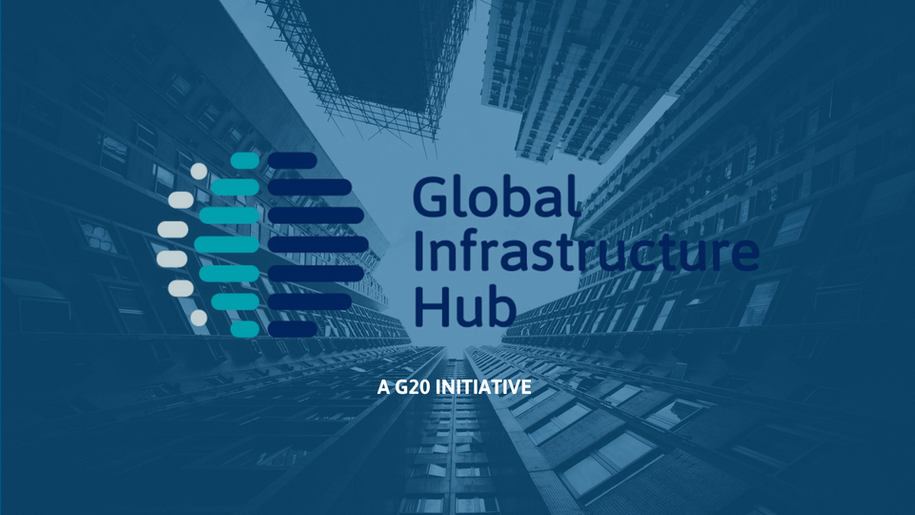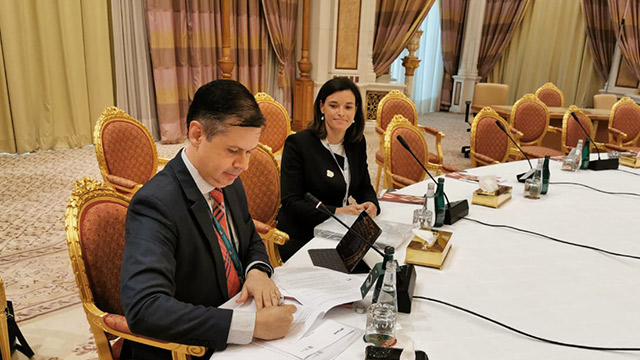Filter by
280 results found
News
Read time: 5 minutes
Published
04 Nov 2017
View news


News
Infrastructure definitions and classifications (taxonomies) have a huge impact on how much gets invested in infrastructure and what types of infrastructure get this investment. This week the G20 and GI Hub held a roundtable on infrastructure taxonomies to explore how they can be used to help close the infrastructure investment gap.
Read time: 5 minutes
Published
29 Mar 2023
View news


News
The Public-Private Infrastructure Advisory Facility (PPIAF) held its Partnership Council Meeting in Vienna, Austria this June. This meeting brought together PPIAF’s esteemed donors and welcomed the Kingdom of Saudi Arabia as the newest donor to PPIAF with their contribution that has supported the integration of the Global Infrastructure Hub (GI Hub) into the PPIAF family. Over the two days, PPIAF engaged in a packed agenda where donors expressed appreciation for the impactful and relevant programs PPIAF delivers.
Read time: 3 minutes
Published
30 Jul 2024
View news


News
As 2018 comes to a close, we would like to take this opportunity to thank you for your support this past year. The Global Infrastructure Hub (GI Hub) had an ambitious agenda for 2018 and we are pleased to say that, with the help of our partners and stakeholders, we have been able to achieve some important milestones.
Read time: 4 minutes
Published
17 Dec 2018
View news


Events, News
This GI Hub and IFC webinar discussed approaches to attracting institutional investors and mobilising capital markets, highlighting solutions and lessons learnt from two recent projects.
Read time: 2 minutes
Published
15 Sep 2021
View news


Events
This week the Global Infrastructure Hub in partnership with Infrastructure Australia hosted the first meeting of our international forum of infrastructure bodies.
The forum is a small group dedicated to sharing best practice amongst organisations in G20 and other countries that undertake independent, long-term infrastructure planning in their jurisdictions.
The purpose of the forum is to create a platform where I-Bodies from across the world can meet and exchange ideas, experiences and learnings.
Read time: 1 minute
Published
01 Apr 2021
View news


Published
17 May 2017
View news


News
An industry event about the need to attract private capital and develop infrastructure as a standalone asset class is nothing new. However, the G20 Infrastructure Financing Seminar that took place in London last week was unique in that it had the most wide-ranging and intense interactions between governments and the private sector that I have seen to-date.
Read time: 4 minutes
Published
26 Feb 2018
View news


News
Investors are most concerned about political and regulatory stability and the liquidity of the infrastructure market when considering funding public infrastructure, a new survey has revealed.
Read time: 1 minute
Published
05 Oct 2016
View news


News
GI Hub was recognised for its work in supporting this Agenda through a library of InfraTech use cases
Read time: 2 minutes
Published
20 Jul 2020
View news


Events
On 3 June, the Italian G20 Presidency in collaboration with the OECD and D20 Long-Term Investor Club, hosted an Infrastructure Investors Dialogue: Financing Sustainable Infrastructure for Recovery.
The objective of the dialogue was to leverage ongoing efforts to advance collaboration between the public and private sectors, with a particular focus on unlocking further investment and sustainability.
A range of leading experts joined and contributed to the session including Global Infrastructure Hub CEO Marie Lam-Frendo.
Read time: 2 minutes
Published
04 Jun 2021
View news


News
Watch the seminar hosted by GI Hub in collaboration with the G20 Infrastructure Working Group (IWG) on Scaling up sustainable infrastructure investment by leveraging private sector participation, bringing together stakeholders from the public and private sectors, providing them with a platform to share their work and perspectives on how we can best address gaps in infrastructure investment
Read time: 1 minute
Published
19 Jan 2022
View news


News
Accelerating the development of Brazil’s infrastructure markets is the aim of Global Infrastructure Hub’s (GI Hub) Country Program with Brazil, recently confirmed in a Letter of Intent with the nation’s Secretary of International Economic Affairs (SAIN) of the Ministry of Economy.
Read time: 2 minutes
Published
11 Dec 2019
View news


News
InfraChallenge 2021 invited ideas for building and maintaining better, more resilient infrastructure. Today we announce the Top 10 competitors.
Read time: 2 minutes
Published
01 Jul 2021
View news


Published
24 Aug 2023
View news


Events
Last week Maud de Vautibault, Director of Practical Tools and Knowledge at the Global Infrastructure Hub participated in a roundtable discussion with the World Association of PPP Units and Professionals (WAPPP)
Read time: 1 minute
Published
31 Mar 2021
View news


News
Watch the GI Hub and International Finance Corporation (IFC) webinar ‘Green recovery for cities: What role can the private sector play’, the second in the series 'New Deals: Funding solutions for the future of infrastructure'. The discussion explored green recovery solutions and highlighted lessons learnt from two projects.
Read time: 1 minute
Published
13 Oct 2021
View news


Events
Discover how you can get involved with InfraChallenge 2021, applications close 12 March.
Read time: 1 minute
Published
05 Mar 2021
View news






















